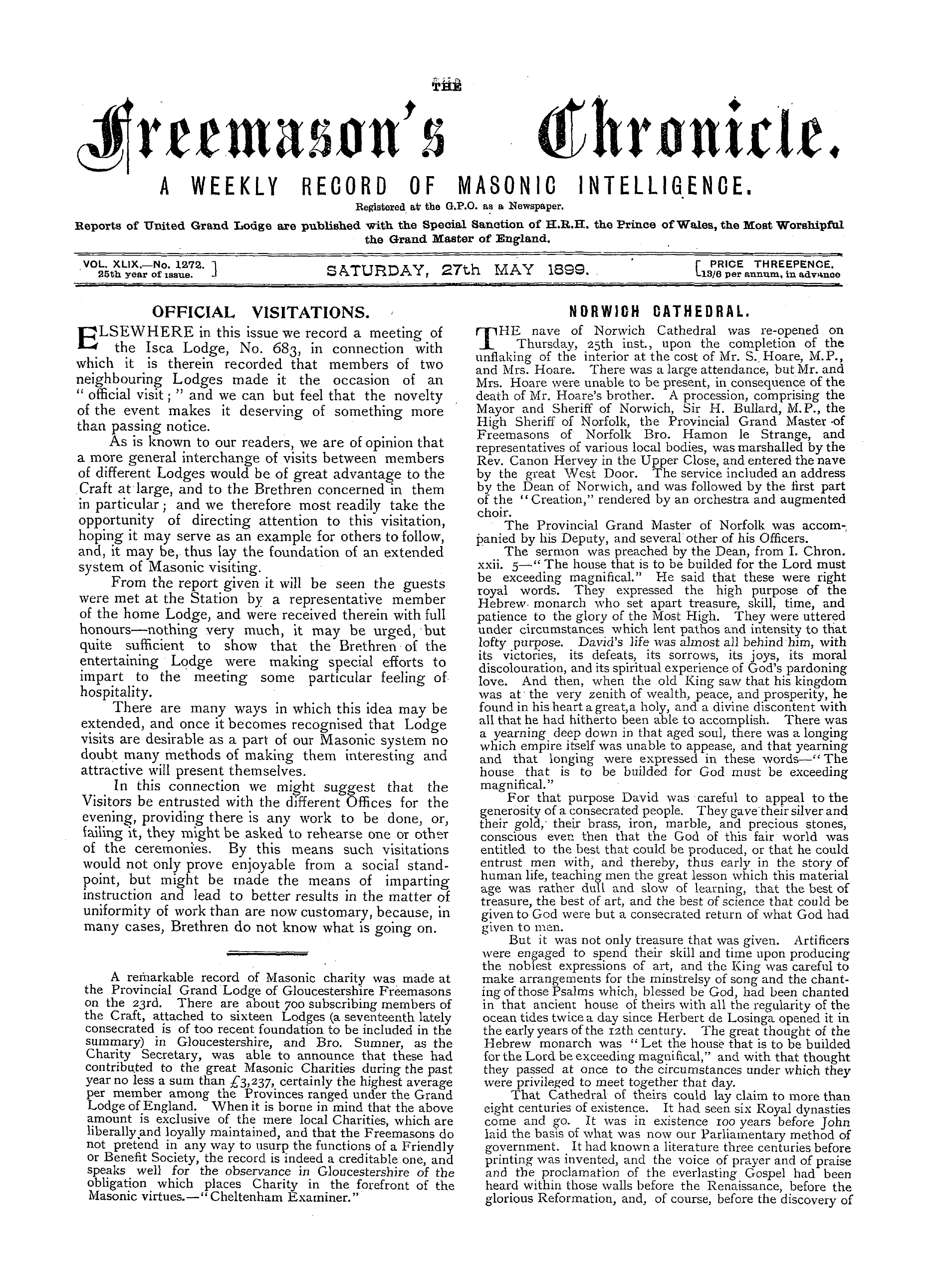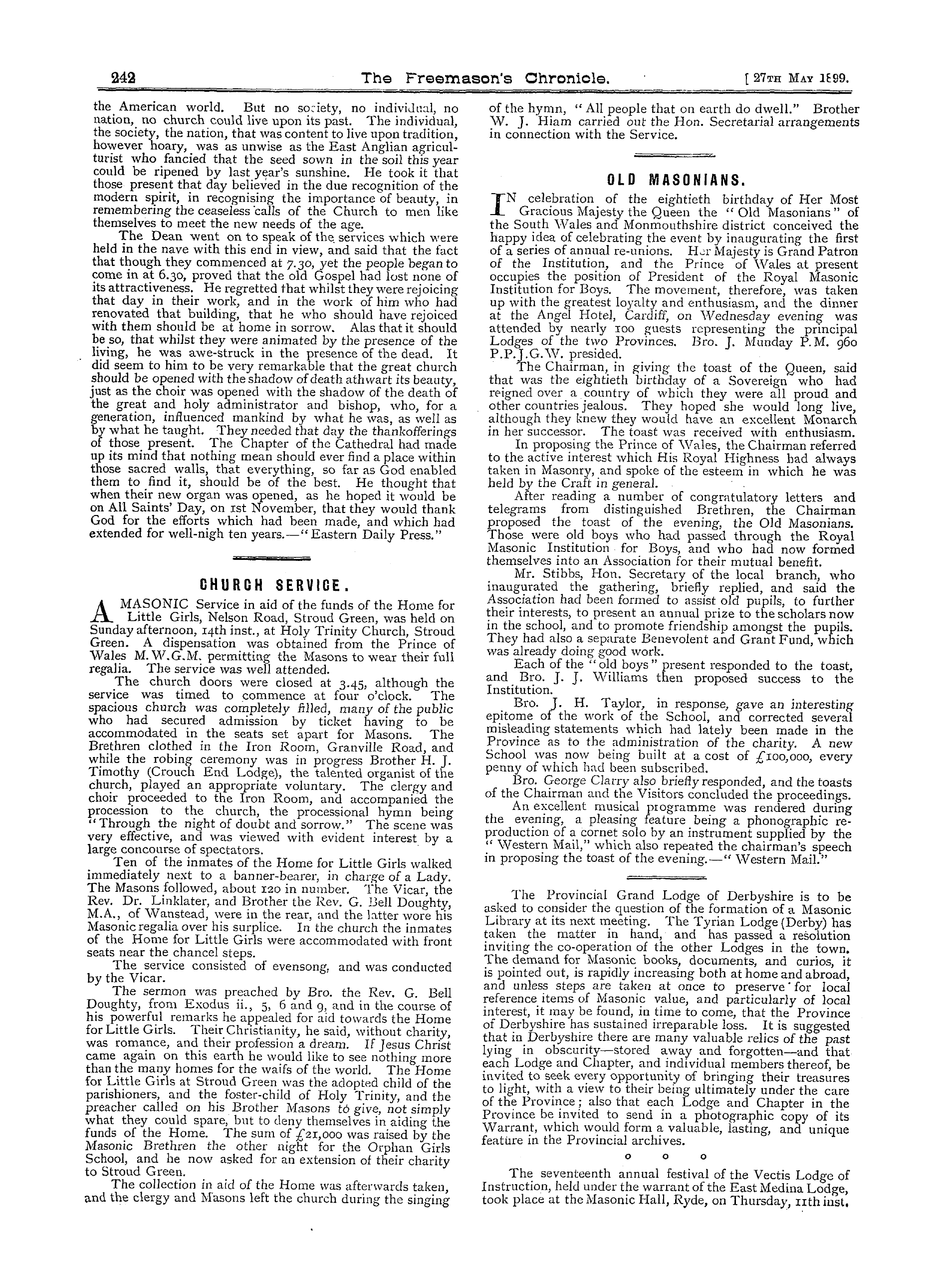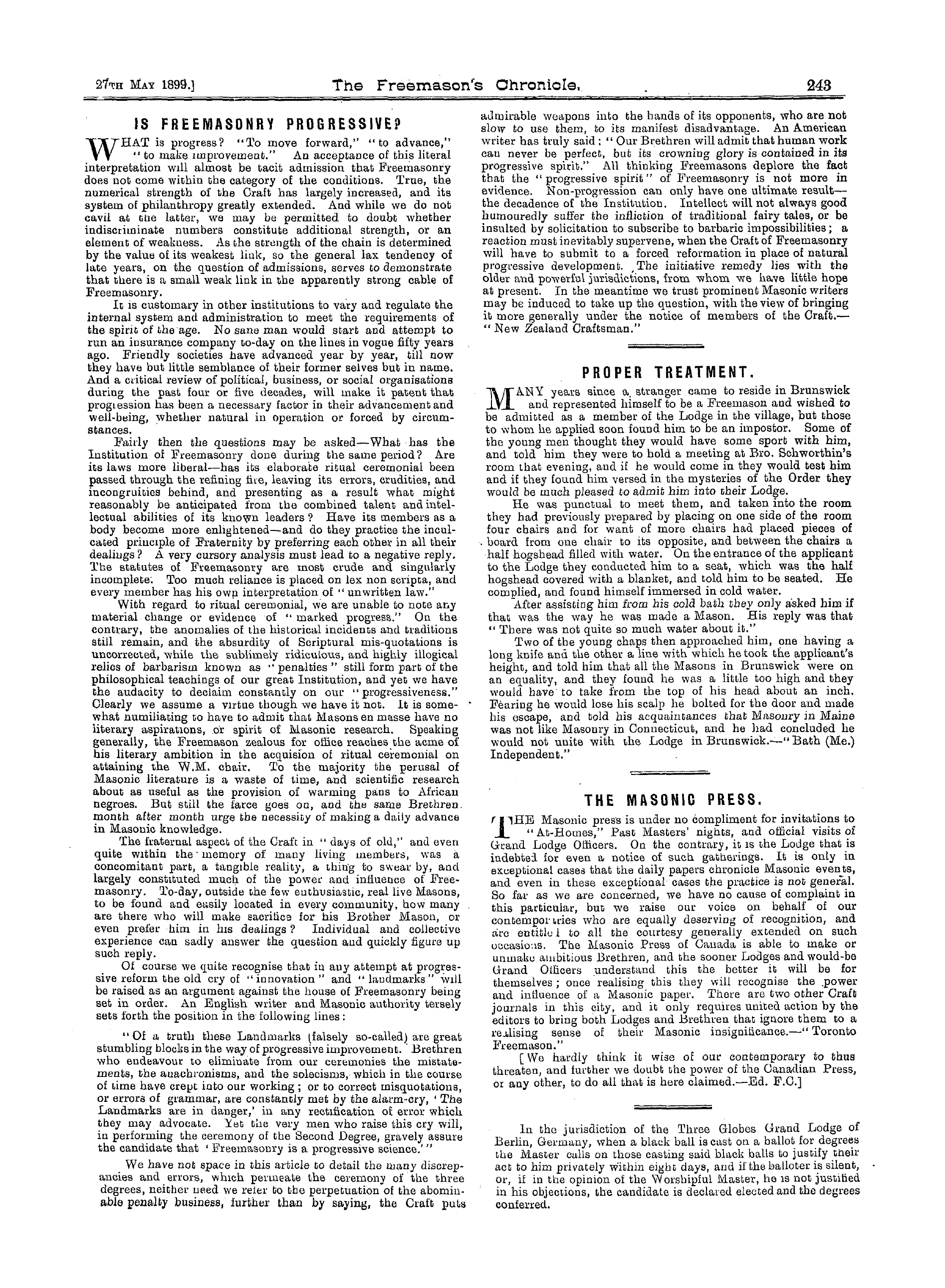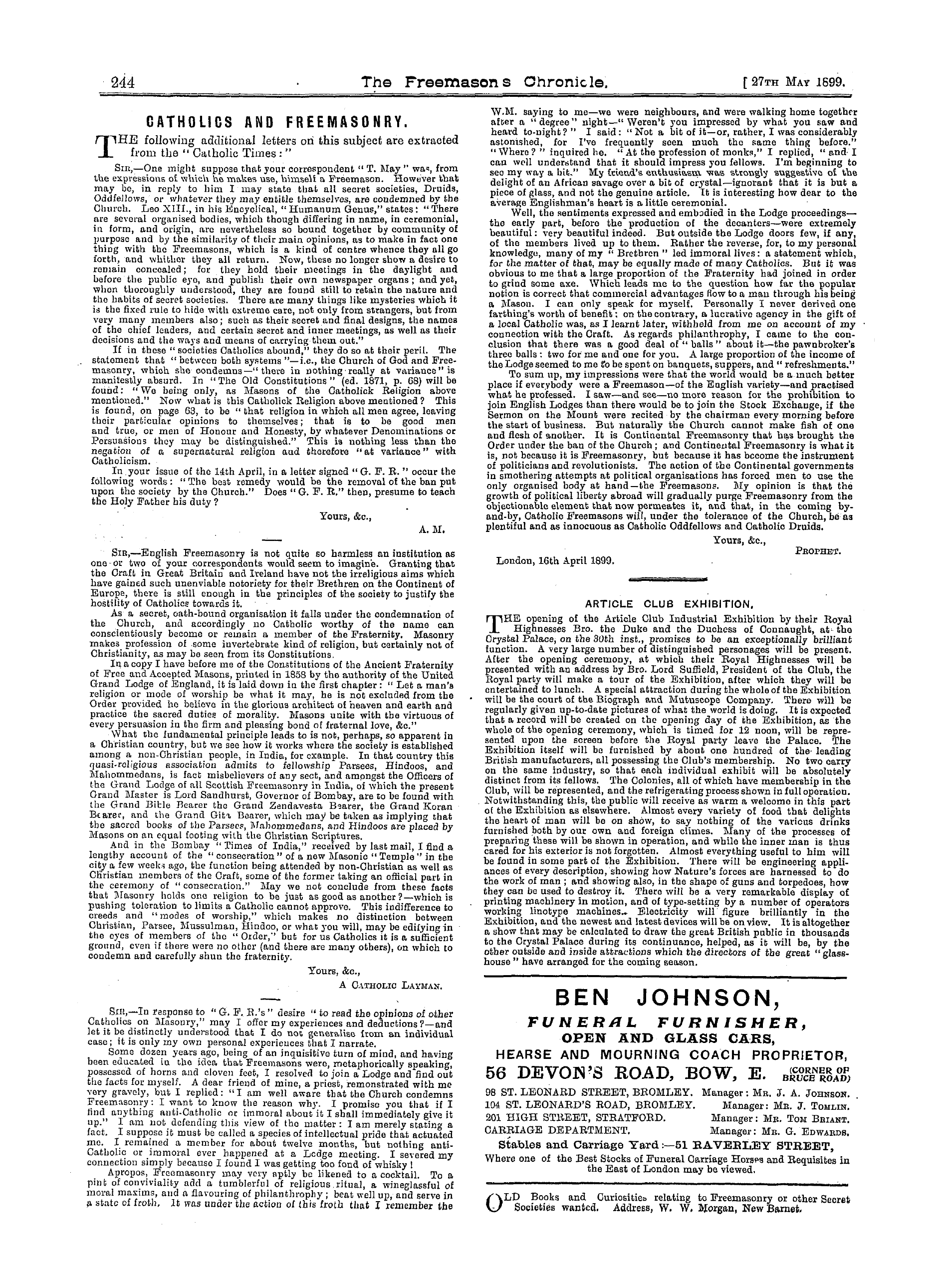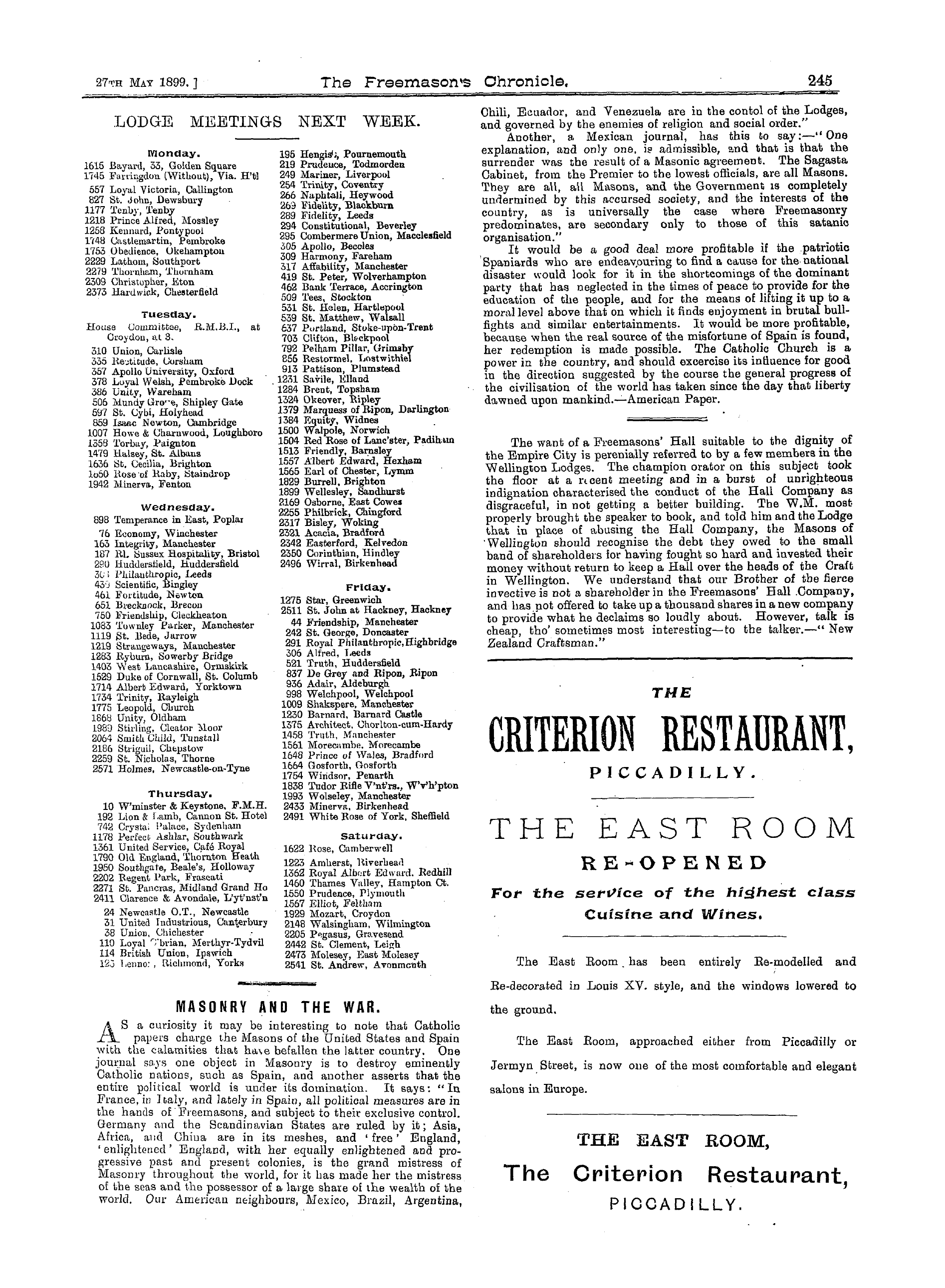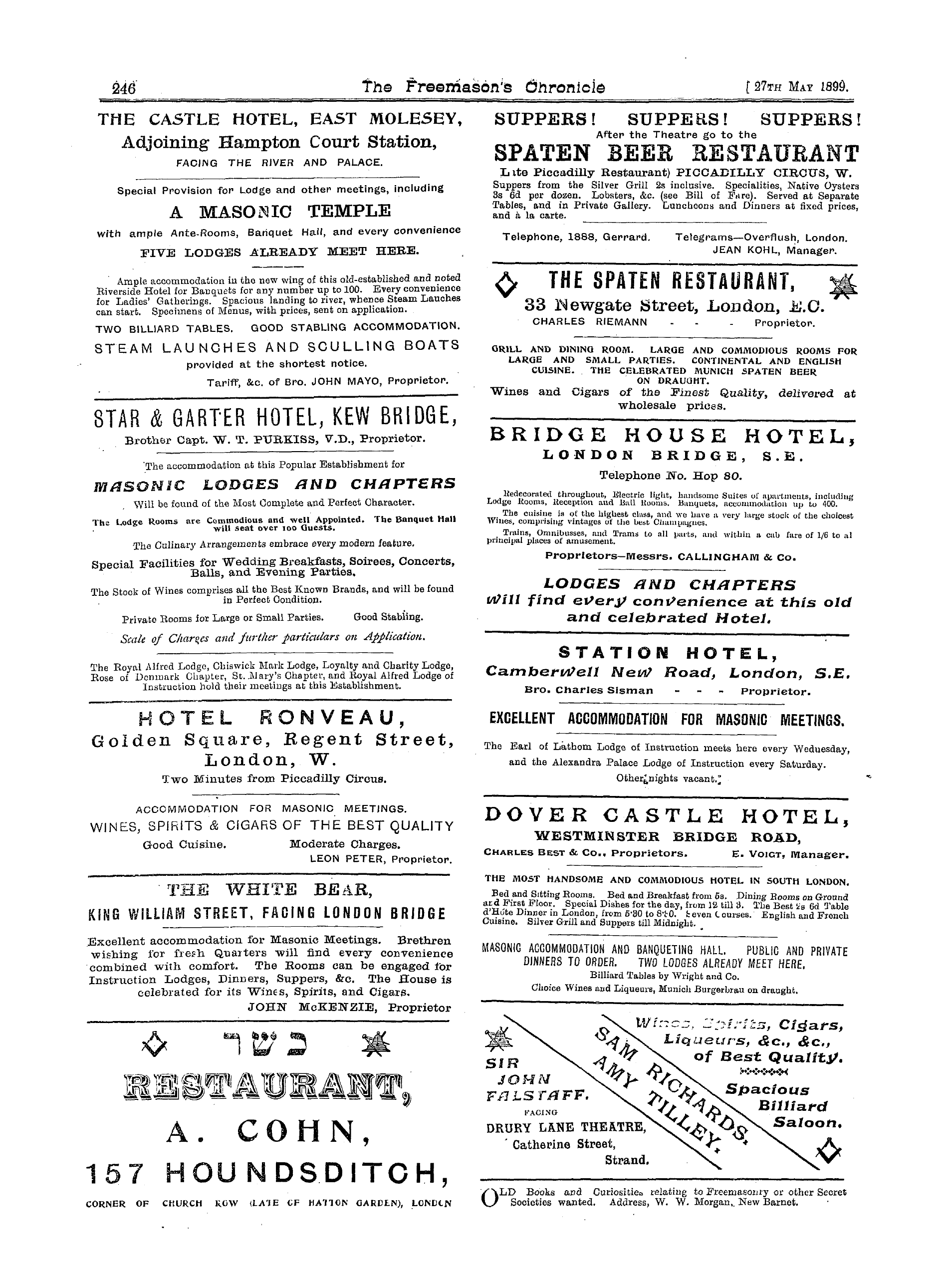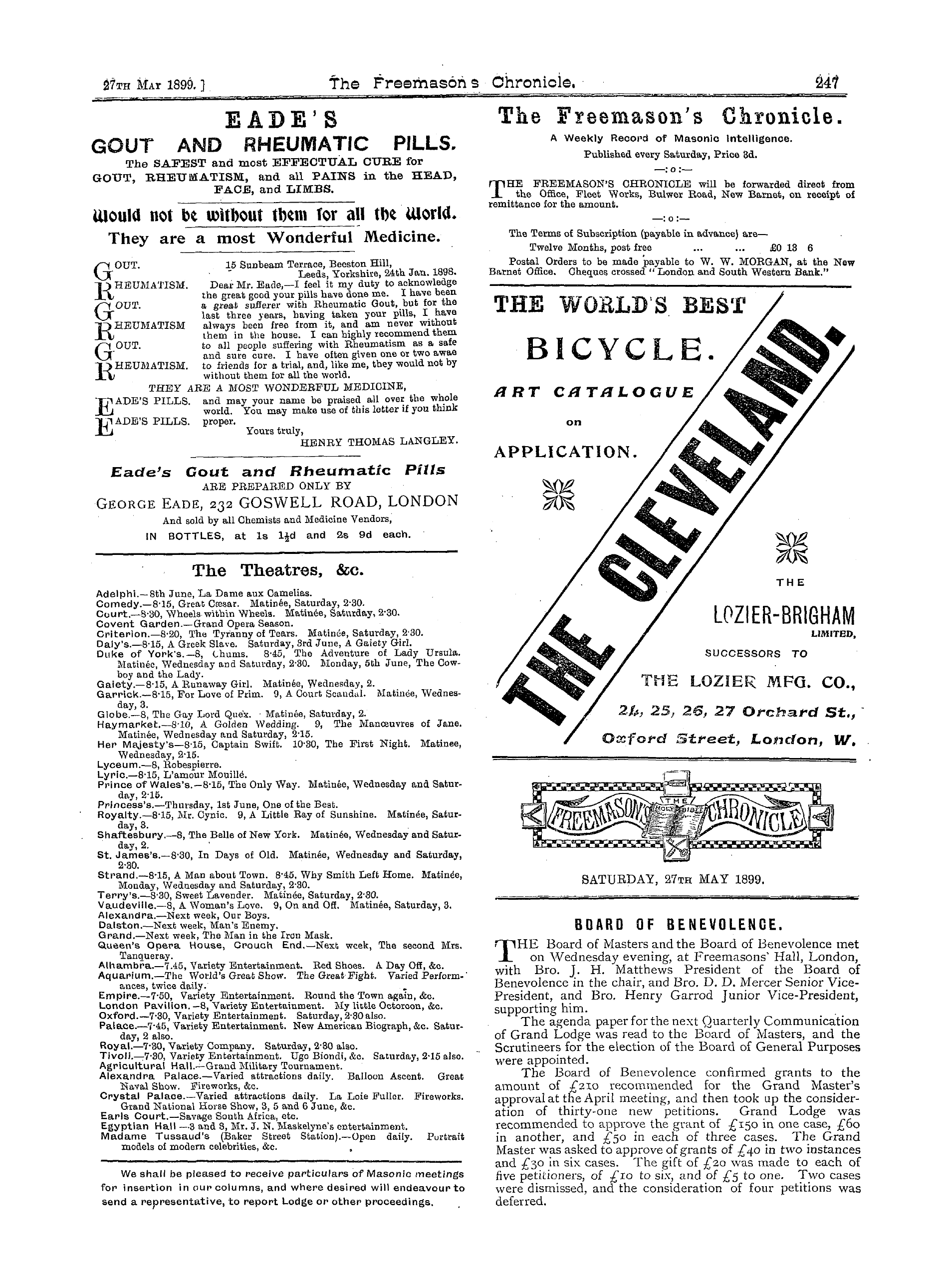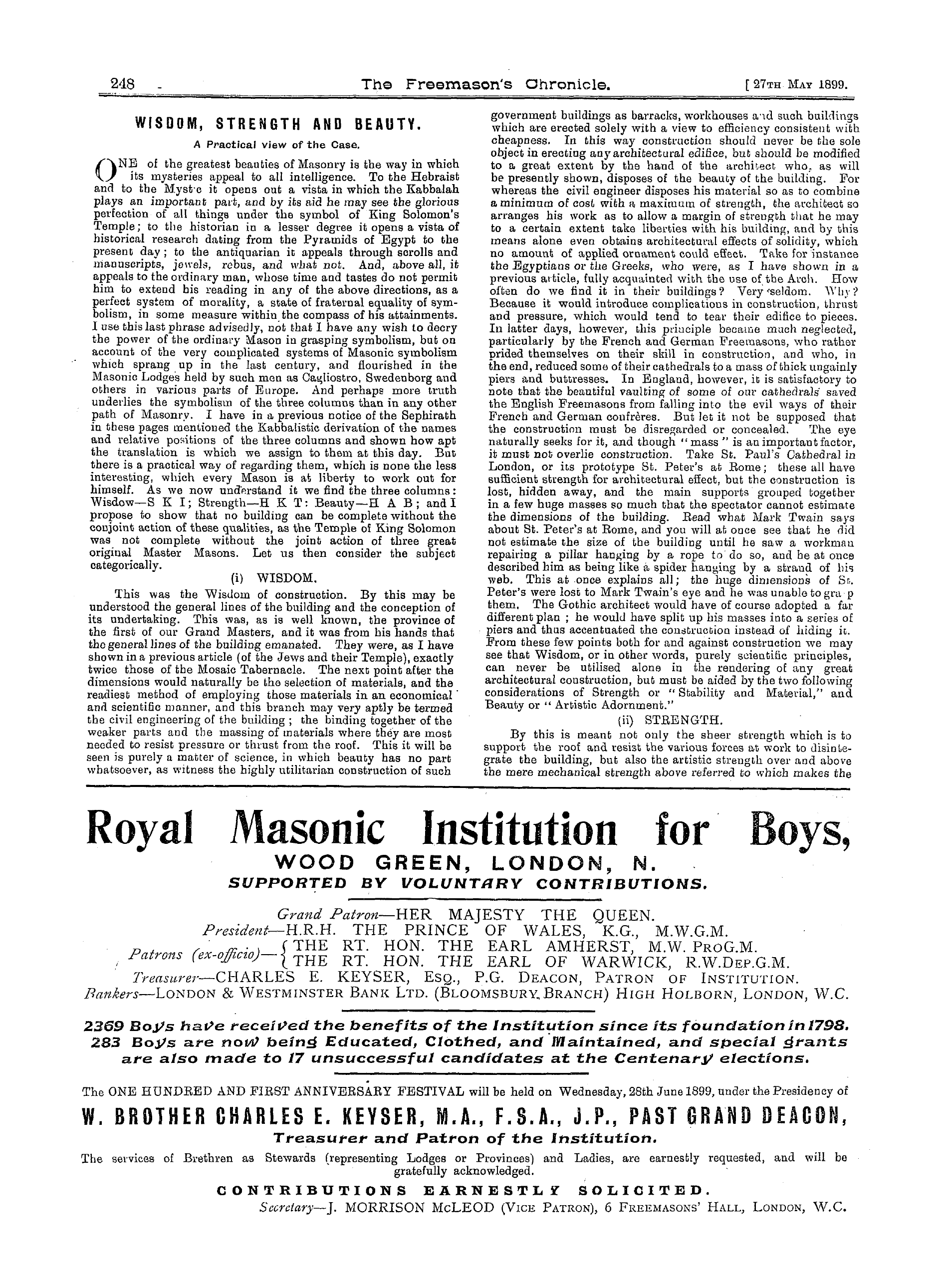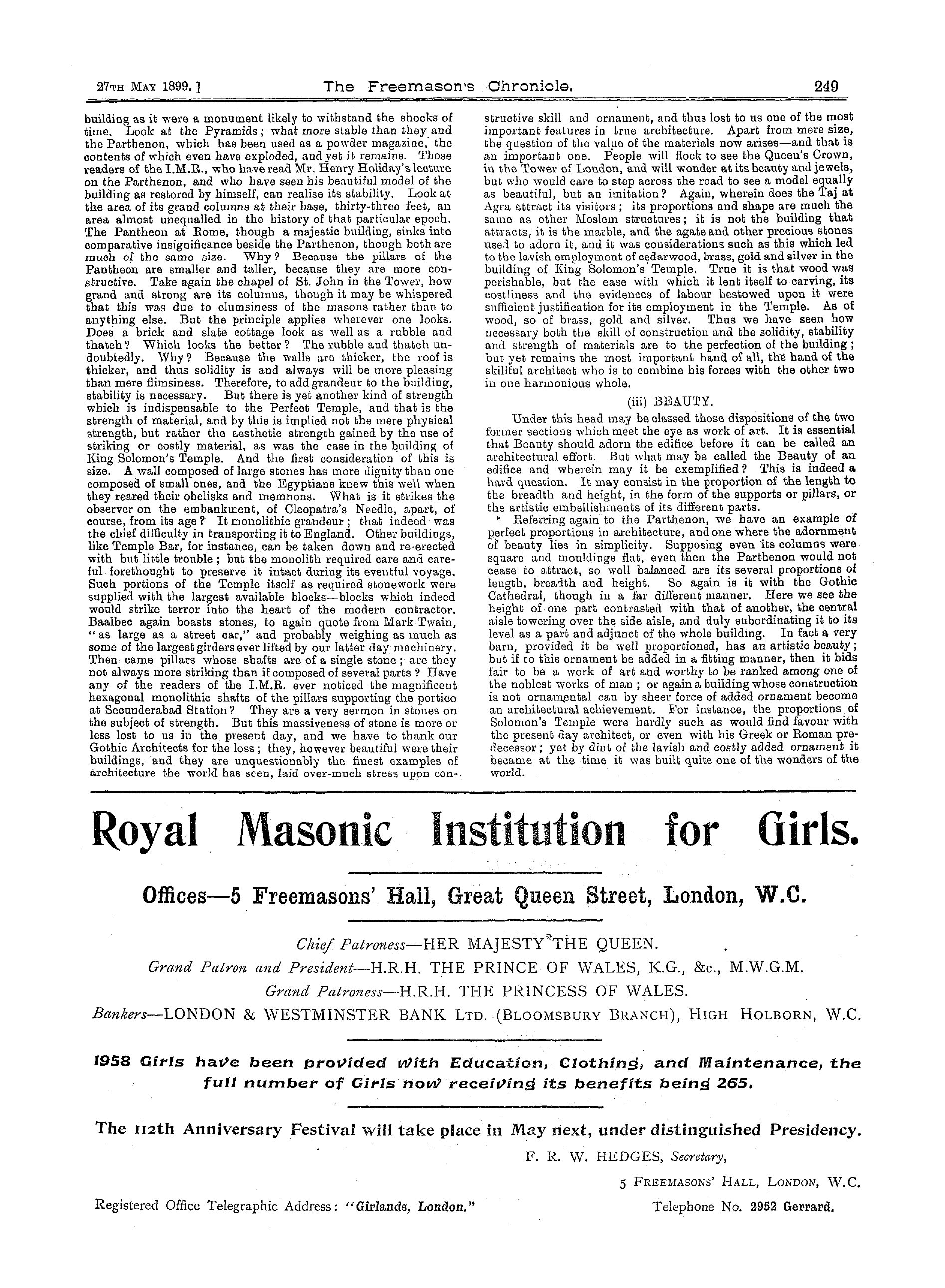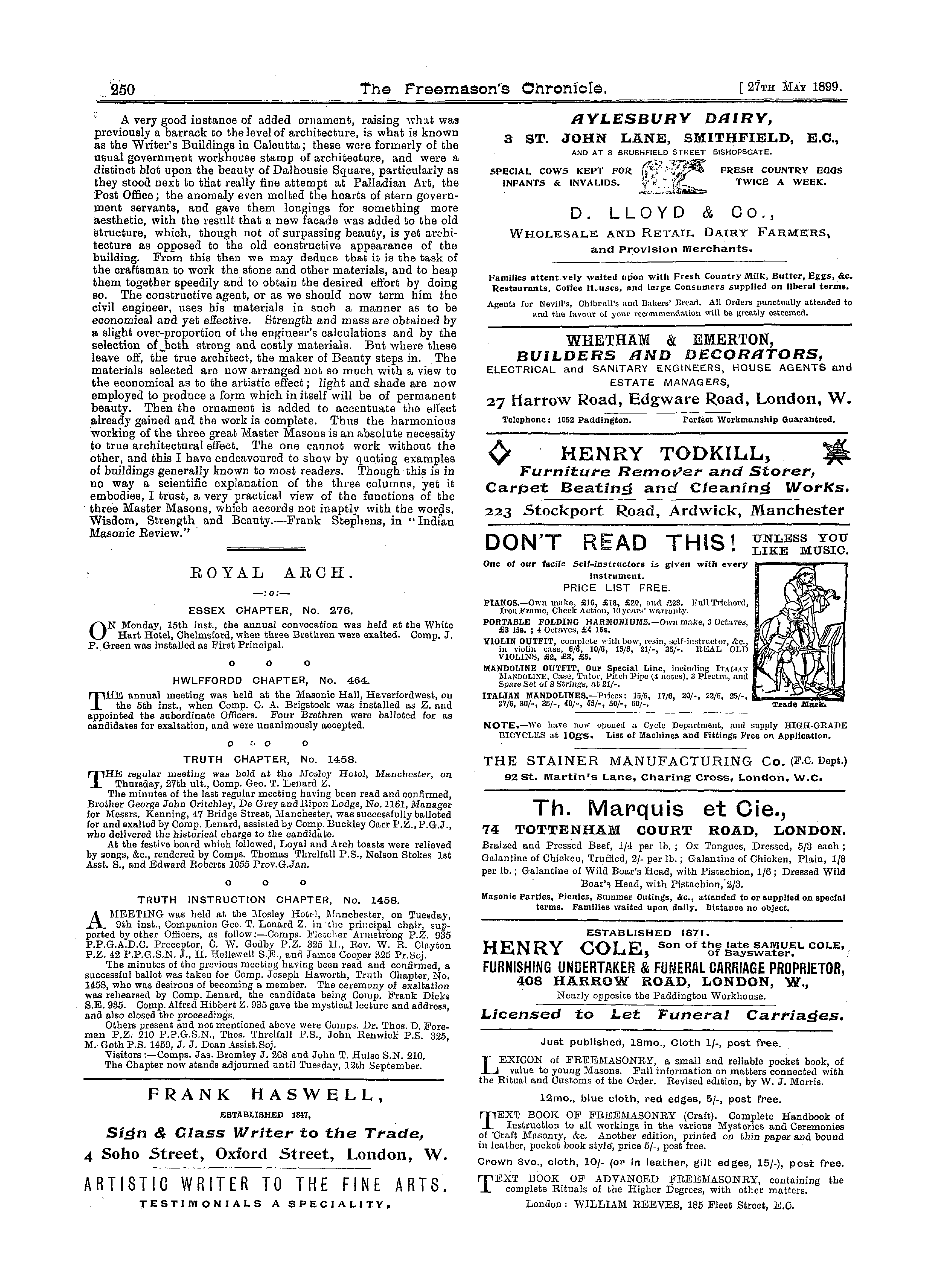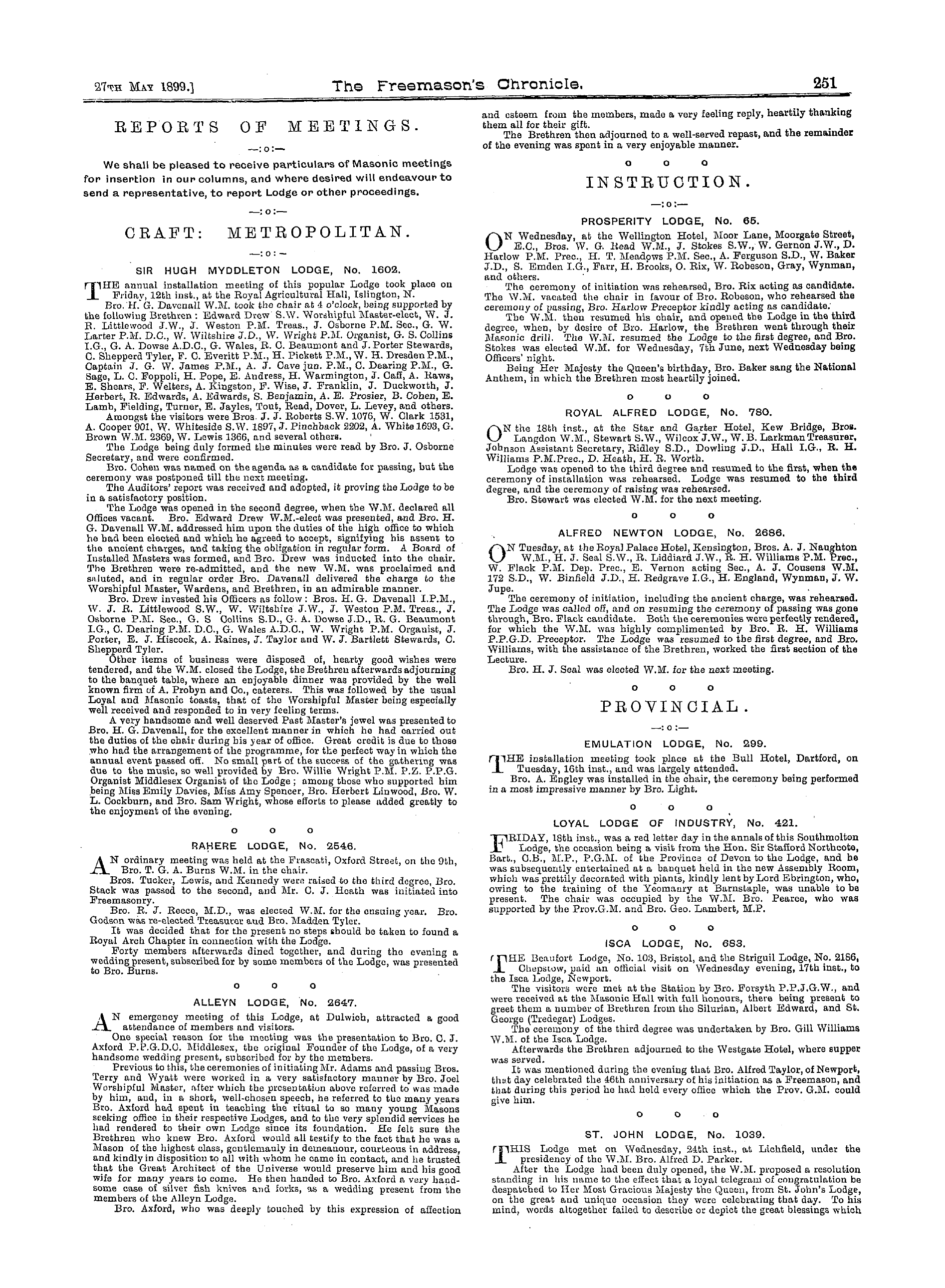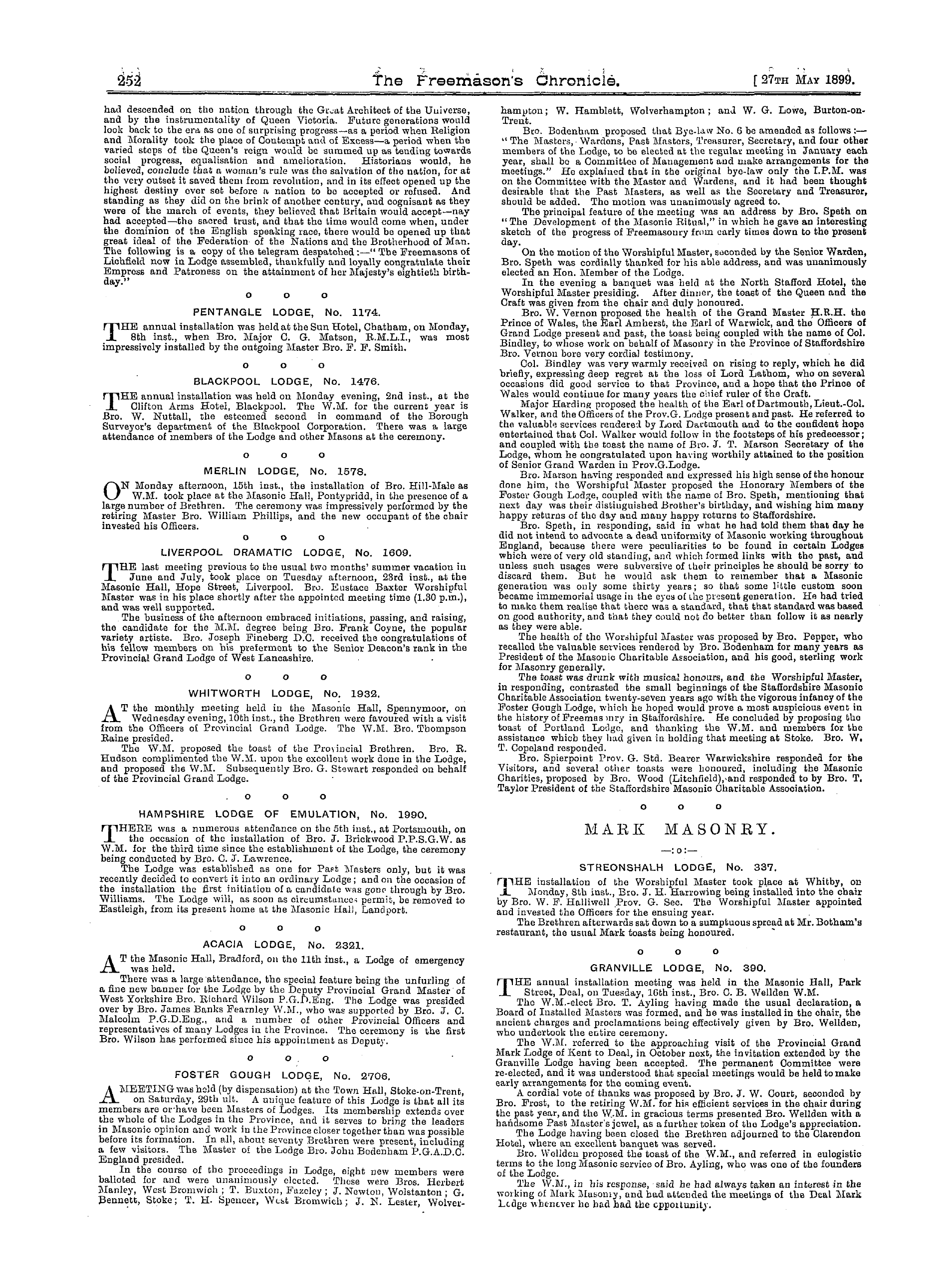-
Articles/Ads
Article WISDOM, STRENGTH AND BEAUTY. Page 1 of 3 Article WISDOM, STRENGTH AND BEAUTY. Page 1 of 3 Ad Untitled Page 1 of 1
Note: This text has been automatically extracted via Optical Character Recognition (OCR) software.
Wisdom, Strength And Beauty.
WISDOM , STRENGTH AND BEAUTY .
A Practical view of the Case . ONE of the greatest beauties of Masonry is the way in which its mysteries appeal to all intelligence . To the Hebraist and to the Mystc it opens out a vista in which the Kabbalah plays an important part , and by its aid he may see the glorious
perfection of all things under the symbol of King Solomon ' s Temple ; to the historian in a lesser degree it opens a vista of historical research dating from the Pyramids of Egypt to the present day ; to the antiquarian it appeals through scrolls and manuscripts , jewels , rebus , and what not . And , above all , it
appeals to the ordinary man , whose time and tastes do not permit him to extend his reading in any of the above directions , as a perfect system of morality , a state of fraternal equality of symbolism , in some measure within the compass of his attainments . I use this last phrase advisedly , not that 1 have any wish to decry
the power of the ordinary Mason in grasping symbolism , but on account of the very complicated systems of Masonic symbolism which sprang up in the last century , and flourished in the Masonic Lodges held by such men as Oatdiostro , Swedenborg and others in various parts of Europe . And perhaps more truth
underlies the symbolism of the three columns than in any other path of Masonry . I have in a previous notice of the Sephirath in these pages mentioned the Kabbalistic derivation of the names and relative positions of the three columns and shown how apt the translation is which we assign to them at this day . But
there is a practical way of regarding them , which is none the less interesting , which every Mason is at liberty to work out for himself . As we now understand it we find the three columns Wisdow—S K I ; Strength—H K T : Beauty—H A B ; and I
propose to show that no building can be complete without the conjoint action of these qualities , as the Temple of King Solomon was not complete without the joint action of three great original Master Masons . Let us then consider the subject categorically . fi ) WISDOM .
This was the Wisdom of construction . By this may be understood the general lines of the building and the conception of its undertaking . This was , as is well known , the province of the first of our Grand Masters , and it was from his hands that tho general lines of the building emanated . They were , as I have shown in a previous article ( of the Jews and their Temple ) , exactly twice those of the Mosaic Tabernacle . The next point after the
dimensions would naturally be the selection of materials , and tha readiest method of employing those materials in an economical and scientific manner , and this branch may very aptly be termed the civil engineering of the building ; the binding together of the weaker parts and the massing of materials where they are most needed to resist pressure or thrust from the roof . This it will be seen is purely a matter of science , in which beauty has no part whatsoever , as witness the highly utilitarian construction of such
Wisdom, Strength And Beauty.
government buildings as barracks , workhouses aid such buildings which are erected solely with a view to efficiency consistent with cheapness . In this way construction should never be the sole object in erecting any architectural edifice , but ahould be modified to a great extent by the hand of the architect who , , as will
be presently shown , disposes of the beauty of the building . For whereas the civil engineer disposes his material so as to combine a minimum of cost with a maximum of strength , the architect so arranges his work as to allow a margin of strength that he may to a certain extent take liberties with his building , and by this
means alone even obtains architectural effects of solidity , which no amount of applied ornament could effect . Take for instance the Egyptians or the Greeks , who were , as I have shown in a previous article , fully acquainted with the use of the Arch . How often do we find it in their buildings ? Very'seldom . "Why ?
Because it would introduce complications in construction , thrust and pressure , which would tend to tear their edifice to pieces . In latter days , however , this principle became much neglected , particularly by the French and German Freemasons , who rather prided themselves on their skill in construction , and who , in
the end , reduced some of their cathedrals to a mass of thick ungainly piers and buttresses . In England , however , id is satisfactory to note that the beautiful vaulting of some of our cathedrals saved the English Freemasons from falling into the evil ways of their French and German confreres . But let it not be supposed that
the construction must be disregarded or concealed . The eye naturally seeks for it , and though " mass " is an important factor , it must not overlie construction . Take St . Paul ' s Cathedral in London , or its prototype St . Peter ' s at Eome ; these all have sufficient strength for architectural effect , but the construction is
lost , hidden away , and the main supports grouped together in a few huge masses so much that the spectator cannot estimate the dimensions of the building . Bead what Mark Twain says about St . Peter ' s at Borne , and you will at once see that he did not estimate the size of the building until he saw a workman
repairing a pillar hanging by a rope to do so , and he at once described him as being like a spider hanging by a strand of his web . This at once explains all ; the huge dimensions of Sc . Peter's were lost to Mark Twain ' s eye and he was unable to grap them . The Gothic architect would have of course adopted a far different plan ; he would have split up his masses into a series of
piers and thus accentuated the construction instead of hiding it . From these few points both for and against construction we may see that Wisdom , or in other words , purely scientific principles , can never be utilised alone in the rendering of any great architectural construction , but must be aided by the two following considerations of Strength or " Stability and Material , " and Beauty or " Artistic Adornment . "
( ii ) STRENGTH . By this is meant not only the sheer strength which is to support the roof and resist the various forces at work to disintegrate the building , but also the artistic strength over and above the mere mechanical strength above referred to which makes the
Ad00802
Royal Masonic Institution for Boys 9 WOOD GREEN , LONDON , M . SUPPORTED BY VOLUNTARY CONTRIBUTIONS . Grand Patron—HER MAJESTY THE QUEEN . President— H . R . H . THE PRINCE OF WALES , K . G ., M . W . G . M . Patrons Yex officio ) - ! THE RT " H 0 N - THE EARL AMHERST , M . W . PROG . M . lations [ exojficioj | THE RT H 0 N THE EARL op WARWICK , R . W . DEP . G . M . Treasurer— CHARLES E . KEYSER , ESQ ., P . G . DEACON , PATRON OF INSTITUTION . Bankers—LONDON & WESTMINSTER BANK LTD . ( BLOOMSBURY , BRANCH ) HIGH HOLBORN , LONDON , W . C . 2369 Boys haVe received the benefits of the Institution since its foundation in 1798 , 283 Boys are noW being Educated , Clothed , and Maintained , and special grants are also made to 17 unsuccessful candidates at the Centenary elections . The ONE HUNDRED AND FIRST ANNIVERSARY FESTIVAL will be held on Wednesday , 28 th June 1899 , under the Presidency of W . BROTHER CHARLES E . KEYSER , M . A ., F . S . A ., J . P ., PAST BRAND DEACON , Treasurer and Patron of the Institution . The services of Brethren as Stewards ( representing Lodges or Provinces ) and Ladies , are earnestly requested , and will bo gratefully acknowledged . CONTRIBUTIONS EARN £ SfL _ SOLICITED . Secretary— J . MORRISON McLEOD ( VICE PATRON ) , 6 FREEMASONS' HALL , LONDON , W . C .
Note: This text has been automatically extracted via Optical Character Recognition (OCR) software.
Wisdom, Strength And Beauty.
WISDOM , STRENGTH AND BEAUTY .
A Practical view of the Case . ONE of the greatest beauties of Masonry is the way in which its mysteries appeal to all intelligence . To the Hebraist and to the Mystc it opens out a vista in which the Kabbalah plays an important part , and by its aid he may see the glorious
perfection of all things under the symbol of King Solomon ' s Temple ; to the historian in a lesser degree it opens a vista of historical research dating from the Pyramids of Egypt to the present day ; to the antiquarian it appeals through scrolls and manuscripts , jewels , rebus , and what not . And , above all , it
appeals to the ordinary man , whose time and tastes do not permit him to extend his reading in any of the above directions , as a perfect system of morality , a state of fraternal equality of symbolism , in some measure within the compass of his attainments . I use this last phrase advisedly , not that 1 have any wish to decry
the power of the ordinary Mason in grasping symbolism , but on account of the very complicated systems of Masonic symbolism which sprang up in the last century , and flourished in the Masonic Lodges held by such men as Oatdiostro , Swedenborg and others in various parts of Europe . And perhaps more truth
underlies the symbolism of the three columns than in any other path of Masonry . I have in a previous notice of the Sephirath in these pages mentioned the Kabbalistic derivation of the names and relative positions of the three columns and shown how apt the translation is which we assign to them at this day . But
there is a practical way of regarding them , which is none the less interesting , which every Mason is at liberty to work out for himself . As we now understand it we find the three columns Wisdow—S K I ; Strength—H K T : Beauty—H A B ; and I
propose to show that no building can be complete without the conjoint action of these qualities , as the Temple of King Solomon was not complete without the joint action of three great original Master Masons . Let us then consider the subject categorically . fi ) WISDOM .
This was the Wisdom of construction . By this may be understood the general lines of the building and the conception of its undertaking . This was , as is well known , the province of the first of our Grand Masters , and it was from his hands that tho general lines of the building emanated . They were , as I have shown in a previous article ( of the Jews and their Temple ) , exactly twice those of the Mosaic Tabernacle . The next point after the
dimensions would naturally be the selection of materials , and tha readiest method of employing those materials in an economical and scientific manner , and this branch may very aptly be termed the civil engineering of the building ; the binding together of the weaker parts and the massing of materials where they are most needed to resist pressure or thrust from the roof . This it will be seen is purely a matter of science , in which beauty has no part whatsoever , as witness the highly utilitarian construction of such
Wisdom, Strength And Beauty.
government buildings as barracks , workhouses aid such buildings which are erected solely with a view to efficiency consistent with cheapness . In this way construction should never be the sole object in erecting any architectural edifice , but ahould be modified to a great extent by the hand of the architect who , , as will
be presently shown , disposes of the beauty of the building . For whereas the civil engineer disposes his material so as to combine a minimum of cost with a maximum of strength , the architect so arranges his work as to allow a margin of strength that he may to a certain extent take liberties with his building , and by this
means alone even obtains architectural effects of solidity , which no amount of applied ornament could effect . Take for instance the Egyptians or the Greeks , who were , as I have shown in a previous article , fully acquainted with the use of the Arch . How often do we find it in their buildings ? Very'seldom . "Why ?
Because it would introduce complications in construction , thrust and pressure , which would tend to tear their edifice to pieces . In latter days , however , this principle became much neglected , particularly by the French and German Freemasons , who rather prided themselves on their skill in construction , and who , in
the end , reduced some of their cathedrals to a mass of thick ungainly piers and buttresses . In England , however , id is satisfactory to note that the beautiful vaulting of some of our cathedrals saved the English Freemasons from falling into the evil ways of their French and German confreres . But let it not be supposed that
the construction must be disregarded or concealed . The eye naturally seeks for it , and though " mass " is an important factor , it must not overlie construction . Take St . Paul ' s Cathedral in London , or its prototype St . Peter ' s at Eome ; these all have sufficient strength for architectural effect , but the construction is
lost , hidden away , and the main supports grouped together in a few huge masses so much that the spectator cannot estimate the dimensions of the building . Bead what Mark Twain says about St . Peter ' s at Borne , and you will at once see that he did not estimate the size of the building until he saw a workman
repairing a pillar hanging by a rope to do so , and he at once described him as being like a spider hanging by a strand of his web . This at once explains all ; the huge dimensions of Sc . Peter's were lost to Mark Twain ' s eye and he was unable to grap them . The Gothic architect would have of course adopted a far different plan ; he would have split up his masses into a series of
piers and thus accentuated the construction instead of hiding it . From these few points both for and against construction we may see that Wisdom , or in other words , purely scientific principles , can never be utilised alone in the rendering of any great architectural construction , but must be aided by the two following considerations of Strength or " Stability and Material , " and Beauty or " Artistic Adornment . "
( ii ) STRENGTH . By this is meant not only the sheer strength which is to support the roof and resist the various forces at work to disintegrate the building , but also the artistic strength over and above the mere mechanical strength above referred to which makes the
Ad00802
Royal Masonic Institution for Boys 9 WOOD GREEN , LONDON , M . SUPPORTED BY VOLUNTARY CONTRIBUTIONS . Grand Patron—HER MAJESTY THE QUEEN . President— H . R . H . THE PRINCE OF WALES , K . G ., M . W . G . M . Patrons Yex officio ) - ! THE RT " H 0 N - THE EARL AMHERST , M . W . PROG . M . lations [ exojficioj | THE RT H 0 N THE EARL op WARWICK , R . W . DEP . G . M . Treasurer— CHARLES E . KEYSER , ESQ ., P . G . DEACON , PATRON OF INSTITUTION . Bankers—LONDON & WESTMINSTER BANK LTD . ( BLOOMSBURY , BRANCH ) HIGH HOLBORN , LONDON , W . C . 2369 Boys haVe received the benefits of the Institution since its foundation in 1798 , 283 Boys are noW being Educated , Clothed , and Maintained , and special grants are also made to 17 unsuccessful candidates at the Centenary elections . The ONE HUNDRED AND FIRST ANNIVERSARY FESTIVAL will be held on Wednesday , 28 th June 1899 , under the Presidency of W . BROTHER CHARLES E . KEYSER , M . A ., F . S . A ., J . P ., PAST BRAND DEACON , Treasurer and Patron of the Institution . The services of Brethren as Stewards ( representing Lodges or Provinces ) and Ladies , are earnestly requested , and will bo gratefully acknowledged . CONTRIBUTIONS EARN £ SfL _ SOLICITED . Secretary— J . MORRISON McLEOD ( VICE PATRON ) , 6 FREEMASONS' HALL , LONDON , W . C .
